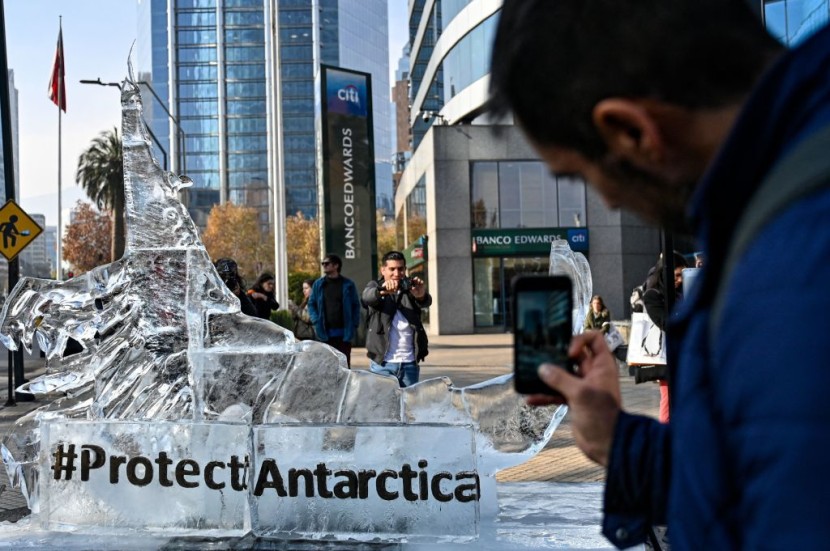
(Photo: by MARTIN BERNETTI/AFP via Getty Images) Passers-by take snapshots of an ice sculpture representing a three-meter krill in Santiago on June 19, 2023 within the framework of a special meeting of the Commission for the Conservation of Antarctic Marine Living Resources (CCAMLR).
Krill, a paper-clip-sized crustacean that is an essential component of the area's food chain and, according to scientists, a key defense against global warming.
As a result of worries that it would harm whales, seals, and other species that consume the shrimp-like crustaceans, krill fishing is prohibited in U.S. seas; nonetheless, it has been practiced for decades in Antarctica, where krill are most prevalent, according to The Associated Press.
The Soviet Union began it in the 1960s when it sent out a fleet of industrial trawlers in quest of an underutilized protein source that could be canned like sardines.
Some scientists are warning that the fishery is at a critical point and needs stricter controls immediately because of the rising demand for nutrient-rich krill, which is used to feed farm-raised fish, make omega-3 supplements, pet food, and protein shakes.
These factors, along with advancements in fishing technology and the still-unknown impact of climate change, are also contributing to the fishery's precarious state. However, because Russia and China want to extend the catch as soon as possible, any further progress is hampered by geopolitical squabbles.
It's a harvest that, by its very nature, takes place far from any port and requires harsh conditions.
Starting in December, 10 to 12 predominantly Norwegian and Chinese ships face the choppy seas rushing over South America's southernmost edge to arrive at the lonely group of rocky outcrops known as the South Orkney Islands. The fleet then follows the enormous krill swarms toward the South Pole as the weather warms, fishing at the base of the delicate ecosystem's food chain.
Read also: Over 100 Dolphins Die in Amazon as Water Temperatures Reach Record Highs
Increasing Krill Capture
The krill capture has increased dramatically under a conservation agreement established over two decades ago, rising from 104,728 metric tons in 2007 to 415,508 metric tons in 2022 as larger, more advanced vessels have joined the hunt. Those concentrations fell beneath internationally recognized conservation limits.
As the importance of krill in providing food for other species and in removing significant amounts of greenhouse gases from the atmosphere comes to light, a coalition led by the United States has been pressing for additional limits and marine reserves. But China and Russia, who have been open about their geopolitical aspirations on the white continent, have resisted it fiercely.
Direct competition with marine mammals appears unavoidable, a fact that was vividly highlighted in 2021 and 2022 when a Norwegian krill trawler ensnared four young humpback whales.
Despite the fact that the end of commercial whaling has allowed populations to recover, a recent study by the University of California, Santa Cruz discovered that humpback whale pregnancy rates in Antarctica have been significantly declining. This may be because their major diet, krill, is in short supply. Fur seals and chinstrap penguins both experience stress.
Related article: Japan Announces Long-Term Plan to Support Fisheries After Fukushima Water Release
© 2025 HNGN, All rights reserved. Do not reproduce without permission.








